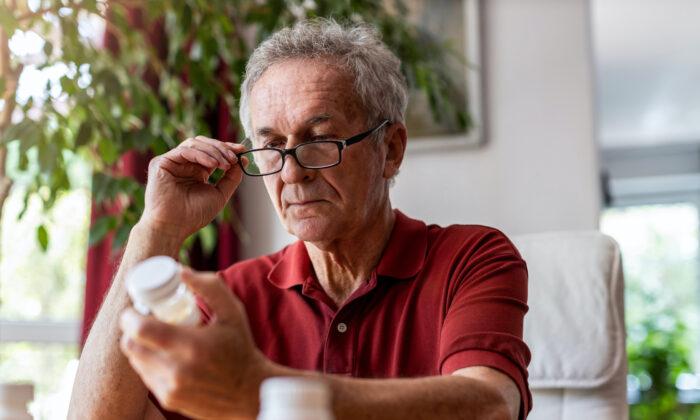Heat therapy may play a role in alleviating depression, a condition that affects one in five Americans.
Is an ancient remedy for depression poised for a comeback as a modern-day, drug-free treatment?
For many people with depression, standard treatments give only
partial relief, and medications often come with side effects. Additionally,
30 percent of patients are diagnosed with treatment-resistant depression.
It is well-known that physicians in early times believed in the power of heat to cure “melancholia"—the ancient Greek word for depression. Galen of Pergamon, who served as Marcus Aurelius’s physician,
prescribed hot baths for melancholy. Hippocrates—considered the father of medicine—believed heat could
cure many diseases.
Story continues below advertisement
While the causes of depression are far more complex than what the ancient Greeks understood, it appears their belief in raising the body’s temperature has treatment potential—at least, according to a novel discovery about the relationship between body temperature and depression.
People With Depression Have Higher Body Temperatures
Scientists from the University of California–San Francisco (UCSF) found that people suffering from major depressive disorder (MDD) have higher body temperatures compared to those without depression, opening the door to using body-based treatments that regulate body temperature.Previous studies using controlled conditions have hinted at a potential link between body temperature and depression, but this new study
published in Scientific Reports is the largest of its kind. Investigators examined minute-level data from more than 20,000 individuals from 106 countries, collected across seven months through wearable sensors.
They also found that an increase in depression severity corresponded with higher increases in body temperatures.
This new research substantiates previous clinical trials on heat therapy and depression.
Story continues below advertisement
“Ironically, heating people up actually can lead to rebound body temperature lowering that lasts longer than simply cooling people down directly, as through an ice bath,” Ashley Mason, the study’s lead author and associate professor of psychiatry at UCSF Weill Institute for Neurosciences, stated in a press release.
In those smaller studies, when people with depression recovered,
elevated body temperatures decreased, suggesting that interventions that lower body temperature by triggering the body to self-cool through sweating may also help alleviate symptoms.
While current drug treatments target certain neurotransmitters, this new research makes the case for hyperthermia, a treatment that briefly turns up the heat to induce the body’s natural cooling response.
“Although it may seem counterintuitive that interventions that temporarily raise body temperature could benefit a condition characterized by increased body temperature,” the UCSF study authors wrote, “acute exposure to high heat induces ... cooling processes that produce longer-term and sustained reductions in body temperature.”
Story continues below advertisement
“Sweating is our body’s way of lowering the body temperature back down from being too high,” Chris Minson, environmental physiologist and professor at the University of Oregon, told The Epoch Times.
Sweat absorbs the heat from your body and then eventually evaporates, which cools the skin and lowers body temperature, he added.
The study authors noted that body temperature reflects a balance between the body’s warming mechanisms, which can occur through exercise, and its cooling mechanisms, and problems with either of these processes could also result in higher temperatures.
Turning Up the Heat
It’s well-documented that certain types of depression are associated with chronic inflammation, in which the body’s inflammatory response becomes dysregulated and continues, despite no infection or injury.Researchers hypothesize that persistent low-level inflammation may trigger or exacerbate depression in some people. However, it
remains unclear if depression drives inflammation or vice versa.
Story continues below advertisement
But for many millennia, multiple cultures have benefited from the mood-enhancing effects of repeated whole-body hyperthermia (WBH) from heated springs and spas. Several small studies on heat therapy have found lasting antidepressive effects from heat-based interventions, including
hot yoga,
hyperthermic baths, and
infrared light.
One
study from April 2023 set out to determine if hyperthermia’s positive impact on mood was associated with changes in inflammation.
The researchers measured cytokine levels in patients with MDD before and after treatments inside a whole-body infrared heating device used to treat cancer and fibromyalgia. Cytokines are
signaling proteins that help control inflammation in the body.
The study showed that WBH briefly elevated the patients’ cytokine levels, specifically interleukin-6 production, reducing inflammation and causing an acute and sustained reduction in participants’ depressive symptoms.
Story continues below advertisement
The researchers noted that the relationship between hyperthermia, the immune system, and depression points to WBH as a promising therapy.
Hyperthermia Mimics Exercise
Mr. Minson explained that when the body undergoes extreme heat, the immune system activates an anti-inflammatory mechanism.“We are mimicking exercise by doing these repeated increases in our body temperature, and it not only mimics exercise but gives us similar benefits.
“When you exercise, your muscles generate a lot of heat, your body temperature gets higher, blood flow increases, sweating begins, your respiratory rate changes, anti-inflammatory markers increase, and it is the same thing with heat therapy,” he said.
Luckily, therapeutic heat treatments are not limited to expensive medical-grade devices. In another recent
study published in October 2023, researchers found that hot yoga, which is practiced in a heated room, can reduce symptoms of depression by 50 percent or more.
Story continues below advertisement
The randomized controlled trial included 80 volunteers with moderate to severe depression. Researchers divided the participants into two groups over an eight-week period. One group was prescribed a minimum of two 90-minute hot yoga sessions each week. The other group was put on a waiting list.
About 60 percent of the yoga group reported a significant decrease in their depression symptoms, compared to 6.3 percent in the waitlist group.
For patients who may not be ready for the physical demands of a yoga session, research suggests that hot baths are also effective.
In a
2020 randomized controlled study of 45 people with depression, those who took two 20-minute baths each week at a temperature of approximately 104 degrees Fahrenheit reduced their symptoms of depression. The researchers concluded that hyperthermic baths may be a fast-acting, safe, and accessible method leading to clinically relevant improvement in depression.
A Return to Tradition
As psychotherapy and pharmacology were introduced in the 1900s, the well-established therapeutic spa tradition became obsolete. While the mechanisms behind how heat therapies work will continue to be researched, researchers see potential in regular spa visits or taking up hot yoga to help with depression symptoms, along with therapy.
Many people are familiar with Finnish saunas, which use dry heat, and Turkish-style saunas, which have more moisture, as these are accessible at most gyms. Other passive heat therapies include Japanese
Waon therapy and
infrared saunas.







